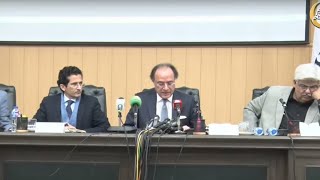For a generation that has lived in a city that has hosted the Olympics and soccer World Cup, you might not expect an international meeting of politicians and business leaders to cause much ado. Yet Seoul is in a state over next week's G20 summit.
While the excitement isn't in the same league as when it hosted the world's two biggest sporting events in 1988 and 2002, Seoul sees the upcoming meeting of the world's 20 leading economies as an ideal platform to show off the city's new look.
"It's a big step for Korea," said Seoul travel agent Cheon Hyeok-Tae, 33. "I'm positive about the G20 because it shows how developed Korea has become. I feel proud about it." Some, however, believe Seoul is spending too much money on an event which excludes ordinary citizens. "While I like the idea that Korea is hosting this event, I think it's been overdone," said Jang Yoo-jin, 23, who works at a clothing company. "There are messy posters everywhere, and I doubt this one event will solve so many issues."
Over the past 10 years, Seoul has morphed from a drab, concrete jungle into a modern - albeit crowded and at times polluted - Asian super-city. In recent months Seoul has been putting the finishing touches to its multi-billion dollar facelift. Streets and pavements have been resurfaced, and flower boxes line the roads. Huge banners drape over dozens of the city's buildings.
Its transformation, dubbed the "miracle on the Han" after the river which runs through it, first started in the 1960s and 70s during a period of rapid economic and industrial growth. Oh Se-hoon, the softly-spoken telegenic politician recently re-elected as the city's mayor, is now embarking on "Miracle II" - to make the 600-year-old city north-east Asia's business hub and a top tourist destination.
"In the 21st century we are entering an era of not only a competition between countries but of cities, so the brand image of a city is very important in terms of creating added value," he told Reuters in an interview. Oh wants his city, home to over 10 million, to rival Shanghai, Hong Kong and Tokyo.
"Seoul is located geographically at the centre of Asia, so you can reach many important cities in Asia conveniently ... and it provides an environment that is quite stable, definitely more stable than that of China," he said. To lure foreign companies, business districts are being built and the government is offering tax breaks and other incentives. But there has been criticism.
Some point to the changes to a plaza in front of an ancient palace not far from Oh's offices in the city centre as an example of how easily plans can go awry. Gwanghwamun Square, a pedestrian plaza that opened last year in the middle of one of Seoul's busiest thoroughfares, has drawn fire from some quarters for being overly landscaped and its incongrous location in the middle of 12 lanes of traffic.
Nearby Pimatgol, a winding back alley of pubs that was a longtime refuge for dissidents and working-class drinkers, has been almost completely razed to make way for office blocks. The country's biggest newspaper, the Chosun Ilbo, accused the government of "pulling down living legacies too quickly".
Under Oh's watch $100 million of the city's budget has been dedicated annually to initiatives such as the Han River Renaissance, which has spruced up the river bisecting the capital with dazzling evening light shows and fountain-spouting bridges.
The project will culminate in the construction of an arts facility on a river islet with a massive symphony hall and opera house, capped with an undulating, photovoltaic-ready roof. Also on the riverfront, the city government has begun a $28 billion project of commercial and residential space in a cluster of towers anchored by a 665-metre high skyscraper. Designed by world renowned architect Daniel Libeskind, the Yongsan International Business District is slated for completion in 2016.
BR100
11,987
Increased By
93.1 (0.78%)
BR30
37,178
Increased By
323.2 (0.88%)
KSE100
111,351
Increased By
927.9 (0.84%)
KSE30
35,039
Increased By
261 (0.75%)






















Comments
Comments are closed.